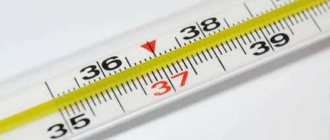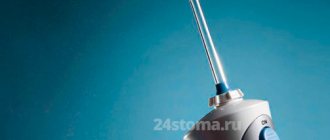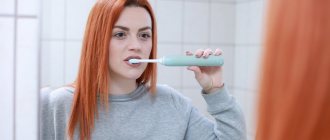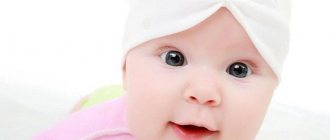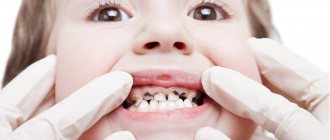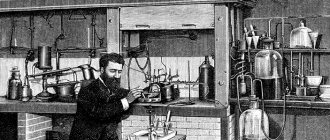Sometimes you are surprised to notice that parents strive to “decorate” their babies in a way that is clearly inappropriate for their age: for example, earrings on one-year-old princesses are no longer uncommon. Or why does a child need amber beads if this decoration on a child’s neck looks clearly alien?
Rumors persistently circulate among parents that amber can relieve pain during teething, and pediatricians and dentists refute this claim with no less enthusiasm. Where can we find the truth?
Amber beads for teething in children: benefits and harms
Let's find out whether amber beads help with teething in children. Let's start with the fact that amber actually has a number of unique healing properties that are not inherent in other substances of natural and artificial origin (we'll talk about this below). This explains the widespread popularity of amber beads for children.
Silver necklace with amber (go to the SUNLIGHT catalog)
According to parents and supporters of alternative medicine, amber beads:
- They have adaptogenic properties. The baby adapts to changes more easily, becomes calmer, and sleep improves. This contributes to the proper development of the child and peace of mind for parents.
- They have an anti-inflammatory effect. Amber is a natural antiseptic; it prevents the occurrence of inflammatory processes and promotes the speedy healing of wounds.
- Affect acupuncture zones. Amber beads for children are made in such a way that they lie around the neck and act on acupuncture points like miniature massage applicators.
- Prevents a number of diseases. According to parents, when children constantly wear amber beads, they are less likely to suffer from infectious diseases. Beneficial microelements penetrate the skin in close proximity to the thyroid gland, which contributes to the proper growth and development of the child. The immune system is strengthened, and this is also worth a lot.
- Mechanically facilitate the process of teething. The baby gnaws on the beads, and teething is more gentle thanks to the antiseptic and analgesic properties of amber. Teeth grow stronger and healthier.
Serious researchers do not find confirmation of the above facts. According to official medicine, amber beads do not have a pronounced therapeutic effect.
According to pediatricians, parents who put amber beads on their little children risk the health of their children. For example, beads can cause asphyxia: direct suffocation with a thread or ingestion of scattered beads. In addition, unprocessed amber can damage children’s delicate gums during active jaw movements.
However, all risks are minimized with the correct selection of amber beads for very young children.
Possible consequences
Improper development of teeth and abnormal bite cause uneven distribution of chewing load. This leads to the development of various complications:
- rapid abrasion of closing teeth;
- caries, pulpitis;
- gingivitis, periodontitis;
- bleeding of the mucous membrane;
- displacement of the articular head of the temporomandibular joint.
When bite deviations occur, problems arise with oral hygiene and microcirculation in the periodontal tissues is disrupted. Ultimately, cellular nutrition, gas exchange, and metabolism are disrupted. A complex of pathological processes leads to early destruction of dentin, periodontal ligaments and tooth loss. Timely consultation with a doctor will help prevent adverse consequences. In Moscow, jaw bite correction is carried out by the Center for Aesthetic Dentistry near the Otradnoye metro station.
Useful properties of amber
The benefits of amber beads for children are based on the healing properties of the main material for their manufacture. Amber is a unique natural formation from the resin of plants that grew on Earth many millions of years ago. Over such a long period of time, fossil resin acquires the hardness of stone and unique properties (including healing ones).
The main active substance in this case is succinic acid. It is widely used in cosmetology, being part of many skin care products. It is also widely used in medicine, being part of dietary supplements that have a beneficial effect on blood composition and the state of the immune system.
Succinic acid can also help dads who are too diligent in noticing the appearance of their offspring’s first teeth. This is the first and absolutely harmless remedy for sobering up and relieving withdrawal symptoms.
Amber beads for babies help saturate the body with this very useful substance. It gradually penetrates the body, exerting a gentle effect on all organs and systems of the developing organism.
Types of dental anomalies
| View | Characteristic |
| Size pathology | Macrodentia. The crown is significantly enlarged. The developmental anomaly is associated with the fusion of several rudiments into one due to hormonal imbalance. Defective units are more often located in the upper row of the smile zone. Microdentia. Excessively small units. Pathogenesis is associated with genetic predisposition. The violation affects the incisors, mainly the upper ones. |
| Anomalies of dental structure | Hyperplasia. “Pearls” are formed on the crown - formations of enamel of various shapes, 1.5 - 3.5 mm in diameter. Droplets are most often localized near the neck of the segment, or in the bifurcation zone of the root. Dysplasia. The surface of the unit is heterogeneous, thinned in places, and gray spots are present. There are many serrations on the incisors. Chipping and increased sensitivity may occur. Hypoplasia. The enamel layer is sharply thinned, sometimes absent (aplasia). Leads to premature development of inflammatory diseases of hard tissues (caries, pulpitis). Dentinogenesis imperfecta. Units are amber in color, opalescent. Enamel and dentin are fragile, susceptible to abrasion and destruction. Insufficient amelogenesis. It manifests itself as thinning of the enamel, the appearance of brown spots, and hyperesthesia to stress factors. |
| Form defect | Spine-shaped (in the form of a thorn or awl). The segments are wide at the base and sharply taper towards the periphery. Possible combination with microdentia. The surface is uneven and spotty. The pathology is characteristic of segments of the smile zone. Barrel-shaped (Hutchinson's teeth). The neck is thickened, the cutting surface has a recess in the center of which there is no enamel layer. Molar segments with a shortened surface and enamel hypoplasia, etc. |
| Growth disorder | Anomalies in tooth growth are associated with their abnormal spatial arrangement: vestibular displacement (outward); oral (inside); high or low localization; trema, diastema (gaps between units); tortoanomaly (rotation of a segment around an axis); crowding; transposition (change of place). |
| Pathology of numbers | Supernumerary (hyperdentia). Extra units. Hypodentia (insufficient quantity). Adentia (complete absence of units in the mouth). |
| Impaired eruption | Retention (retention of a unit in the jaw or alveolar process). Late eruption of incisors. Impaired eruption of paired segments. Premature eruption. |
| Abnormalities of tooth roots | Characterized by a change in the number of roots (downwards or upwards), their curvature |
Common symptoms that occur with most developmental anomalies are: discomfort in the mouth (sometimes soreness), problems with chewing food, and speech defects. Such pathologies are often accompanied by other genetic defects (cleft palate, lips, etc.).
How to choose the right amber beads for your baby
Most accidents involving children's amber beads are due to improper selection. The biggest mistake parents make is making this useful decoration themselves or using accessories intended for adults.
When choosing amber beads for a child, it is wise to pay attention to the following points:
- Amber processing. The beads should be large enough and very smoothly polished so as not to damage the delicate baby skin.
- Accessory length. The beads should fit tightly to the skin, but not “strangle” the little one. This ensures the maximum therapeutic effect and minimizes risks - the child cannot independently reach the decoration with his mouth.
- A thread. The best option is a thick silk (sometimes nylon) thread. The presence of knots separating the beads from each other is welcome. Even if the beads break (which is unlikely), at most one bead will come off the thread. The decorations on the fishing line are far from ideal: theoretically, it can damage the baby’s delicate tissues.
- Clasp. There are two best options: a clasp made of soft plastic and amber itself. In all cases, a screw-on clasp is welcome, which when fastened is completely hidden inside the amber. No metal or other risky materials!
- Availability of a certificate. Unfortunately, there are many fakes in this area. For example, cured epoxy resin looks very much like amber to the uneducated eye. You always have the right to request a certificate, because we are talking about the health of your baby.
Natural amber is widely used in lithotherapy. For example, many medicus of the past considered rubbing amber plates on the temporal areas to be the best remedy for migraines.
Rules of use and precautions
Some sources recommend giving children large pieces of raw amber to chew on. Under no circumstances should you do this. Firstly, you are unlikely to find a piece of fossil resin of a sufficiently safe size, and secondly, the edges of unprocessed amber are unsafe for a baby’s gums and skin.
View all jewelry from the AMBER collection in the SUNLIGHT catalog
You can periodically remove the beads from the baby and let him play with them: the little one will certainly like the bright toy. It is also not forbidden to chew the beads. However, this must be done under the constant supervision of parents, and at night it is better to remove the beads and hide them in order to avoid any accidents.
Paired jewelry collection “Mama’s Daughter”
Undoubtedly, every baby wants to be like her mother. How many times do mothers hear from their daughters “Mom, your beads are so beautiful, let them wear them” or “Buy me earrings like yours!”... how difficult it is to refuse such a sweet request!
For a baby, a mother is a kind of style icon. After all, only between a mother and her daughter there is an invisible, but the strongest family connection. A mother shares her deepest secrets with her baby and is an ideal in matters of raising and shaping the style of a future fashionista. And this applies not only to makeup, shoes and outfits. With what pleasure the little ones look at the jewelry from their mother’s box! Read more...
How to care for amber
Amber is a very delicate substance that requires careful care. It should be stored at room temperature, and when cleaning it, refrain from using abrasives and aggressive reagents.
If we are talking about children's jewelry, then it should be stored in a personal box on a soft cloth. To clean, it is enough to periodically rinse the beads with warm water. In case of heavy contamination, it is permissible to use a soap solution, but after this the beads must be thoroughly rinsed and dried with a napkin.
Whether to buy amber beads for a child is a personal matter for his parents. If you believe in the healing power of stones, buy with confidence: if properly selected and used wisely, this jewelry will definitely not harm your baby!
09.04.21
Unusual stone
In relation to amber, one can constantly use the epithet “unique”. What is its unusualness and how does it differ from other stones?
- It sounds paradoxical, but it is a soft stone;
- it is of organic origin;
- does not form crystals;
- burns and forms vapors at a temperature of 350 degrees, and if the temperature increases to 1000 degrees, it completely evaporates;
- becomes soft in boiling water;
- becomes electrified by friction;
- does not sink in the sea because it has the same density as sea water;
- luminesces under the influence of ultraviolet light.
